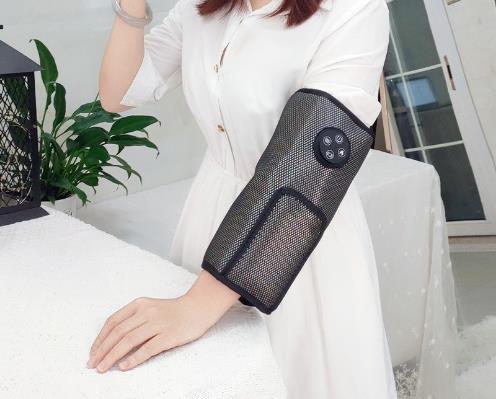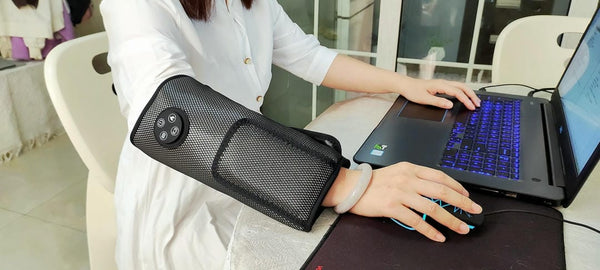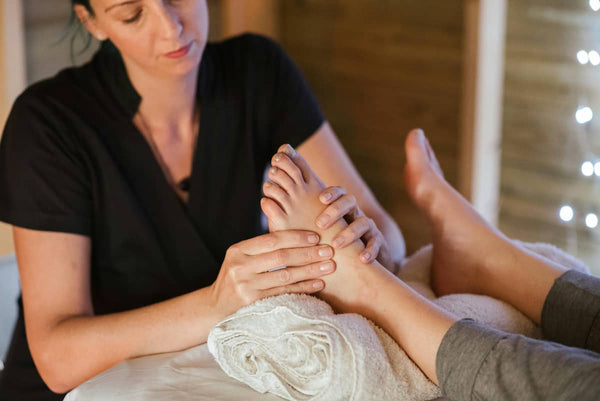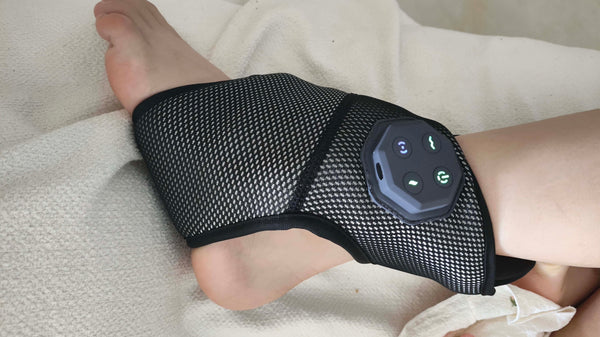 G'day! If you're an office worker who lives for those weekend bushwalks, you know the feeling. You trade your desk chair for a dusty track, but instead of freedom, you get that familiar, frustrating pain shooting down your leg. Sciatica doesn't care if you're tackling a trail in the Blue Mountains or just a local park; when it flares up, it can ruin the whole experience. You've probably wondered, what's the go? Should you be using a hip massager or a lumbar massager to sort it out? It’s a common question, and the answer might not be what you think.
G'day! If you're an office worker who lives for those weekend bushwalks, you know the feeling. You trade your desk chair for a dusty track, but instead of freedom, you get that familiar, frustrating pain shooting down your leg. Sciatica doesn't care if you're tackling a trail in the Blue Mountains or just a local park; when it flares up, it can ruin the whole experience. You've probably wondered, what's the go? Should you be using a hip massager or a lumbar massager to sort it out? It’s a common question, and the answer might not be what you think.
What’s Really Happening During a Sciatica Flare-Up?
First off, let's get this straight. Sciatica isn't a condition itself but a symptom. It's the name for pain caused by irritation or compression of the sciatic nerve, the longest nerve in your body, which runs from your lower back, through your hips and buttocks, and down each leg. For many of us desk-jockeys, the root cause is often tight muscles that squeeze this nerve. Sitting for 40 hours a week can cause our hip flexors to become short and tight. Then, when we ask them to work hard on a weekend bushwalk, they protest, along with the surrounding muscles in the glutes and lower back, putting pressure right where it hurts. This is why just treating the lower back often misses the mark.
The Psoas Muscle: The Hidden Culprit Behind Your Pain
Let's talk about a muscle you might not have heard of: the psoas major. This deep muscle connects your lower spine to your thigh bone, right through your pelvis. It's a core part of your hip flexor group. When it's tight from sitting, it can pull your pelvis forward, strain your lower back, and contribute to that nerve compression causing your sciatica. This is where a targeted psoas massager can be a game-changer. While a general lumbar massager feels good on a sore back, it often can't reach this deep, troublesome muscle. Effectively performing a psoas major massage requires a specific tool designed to get in there, which is why tools marketed as a psoas release tool are gaining popularity.
So, Can Massage Actually Help Tight Hip Flexors and Sciatica?
You bet it can. The top concern for many is, "Does massage help hip pain?" The answer is a resounding yes, provided it’s the right kind of massage. Here’s how it helps:
- Releases Muscle Tension: A good sciatica massage directly targets the tight muscles (like the psoas, piriformis, and glutes) that are compressing the sciatic nerve. This is the key to getting relief.
- Improves Blood Flow: Massage encourages blood flow to the affected area, which helps deliver oxygen and nutrients, promoting healing and reducing inflammation. This can help how to speed up muscle strain recovery.
- Reduces Pain Signals: The pressure from a massage can help interrupt the pain signals being sent to your brain, providing that welcome feeling of immediate sciatica pain relief.
- Increases Flexibility: By loosening up tight hip flexors and glutes, you restore proper movement mechanics, taking the strain off your lower back and sciatic nerve. Using a hip flexor release tool is brilliant for this.
Hip Massager vs. Lumbar Massager: Which is Right for Your Sciatica?
Alright, the main event. While both can feel nice, for sciatica rooted in tight hip flexors and glutes (a common issue for office workers), the focus should be lower down. A lumbar massager is designed for the muscles alongside your spine. It's great for general lower back stiffness but often fails to address the real source of sciatic nerve compression, which is frequently in the hip and buttock area.
A hip massager, a buttocks massager, or even better, a specific psoas tool, is designed to dig into the dense muscles of your glutes, piriformis, and the tricky-to-reach psoas. This is where the magic happens for sciatica relief. By releasing these muscles, you directly take pressure off the nerve. So, while a lumbar massager offers surface-level relief for your back, a good hip massager or psoas massager gets to the root of the problem. Think of it as untying the knot rather than just rubbing the rope.
For hikers needing a portable solution, a multi-functional tool can be a lifesaver. A quality device like the KLCOSY hip and shoulder massager is designed with this kind of targeted relief in mind, making it an effective iliopsoas massager you can chuck in your pack.
How to Use a Massager Effectively for Sciatica Relief on the Go
Just having the tool isn't enough; you need to know how to use it. If you're wondering how to massage a hip flexor or how to relieve buttock muscle pain, here’s a practical guide:
- Warm-Up: Don't go in cold. Do a few gentle stretches before you start. A bit of movement gets the blood flowing.
- Find the Spot: Lie on the floor and place the hip massager or psoas release tool under your glute. Gently roll around until you find a tender spot or "trigger point." That's your target. Don't chase the sharp, shooting pain down your leg—focus on the source in your buttock or hip.
- Apply Gentle, Sustained Pressure: Once you find the spot, relax your body weight onto the tool. Breathe deeply. Hold the pressure for 30-60 seconds. You're not looking for agony, just a "good hurt." This is the core of getting a proper psoas massage.
- Work on the Psoas: To target the psoas, place a specialised psoas massager just to the inside of your hip bone. Lie on your stomach and gently lower yourself onto it. This is an intense spot, so go easy!
- Be Consistent: A one-off session is good, but regular use is better. Using your massager for 5-10 minutes each day can make a massive difference in preventing flare-ups. A portable buttock massager like the KLCOSY Lumber massager can be great for this consistent approach, whether at home or on a trip.
Beyond Massagers: Other Ways to Manage Sciatica
While an effective massage for sciatica pain is a fantastic tool, it's part of a bigger picture. Some light travellers and minimalists are right—prevention is key. Don't forget these tips:
- Correct Your Posture: At your desk and on the trail, keep your spine neutral. Avoid slouching.
- Lighten Your Pack: A heavy pack alters your gait and puts extra strain on your back and hips. Go minimalist where you can.
- Stay Hydrated: Your muscles and spinal discs need water to function properly. Drink up!
- Stretch Regularly: Focus on your hamstrings, glutes, and hip flexors every single day. This is non-negotiable for office workers.
Conclusion: Focus on the Source, Not Just the Symptom
So, when that sciatic pain threatens to derail your bushwalking adventures, should you reach for a hip massager or a lumbar massager? For most office workers, the evidence points clearly towards the hip. The problem often starts with tight glutes and psoas muscles from sitting all week. A targeted hip massager, buttocks massager, or a dedicated psoas massager is your best bet for getting to the root cause and achieving genuine, lasting massage for sciatica relief. A lumbar massager has its place for general back soreness, but for that specific, nerve-pinching pain, you need to target the hip. Paired with good habits, the right tool, like a portable and practical option from KLCOSY, can be the key to keeping you on the trail and out of pain.
Frequently Asked Questions (FAQ)
- Does massage help hip pain from sciatica?
- Absolutely. A targeted sciatica massage on the hip and buttock muscles (like the glutes and piriformis) can relieve the tension that compresses the sciatic nerve, directly addressing a primary cause of the pain.
- Can massage help tight hip flexors?
- Yes, it's one of the best things for them. Using a specialised tool like a psoas release tool or a firm massage ball allows you to apply direct, sustained pressure to the hip flexor muscles, helping them relax and lengthen.
- How do you massage a tight hip flexor?
- The most effective way is to use an iliopsoas massager or psoas tool. You typically lie face down, place the tool just inside your hip bone, and slowly relax your weight onto it, breathing deeply for 30-90 seconds to allow the muscle to release.
- How long will sciatica last?
- This varies hugely. Acute sciatica can last from one to two weeks, but chronic sciatica can persist for months or even years if the underlying cause isn't addressed. Proactive management with tools like a hip massager and stretching can significantly shorten its duration and prevent recurrence.
- Is there any one movement for instant sciatica pain relief?
- While there's no single magic bullet for everyone, many people find instant sciatica relief from a piriformis stretch (like the "figure-four" stretch). However, for deep muscular issues, applying pressure with a psoas massager can often provide more direct and immediate sciatica pain relief by releasing the offending muscle.




0 comments